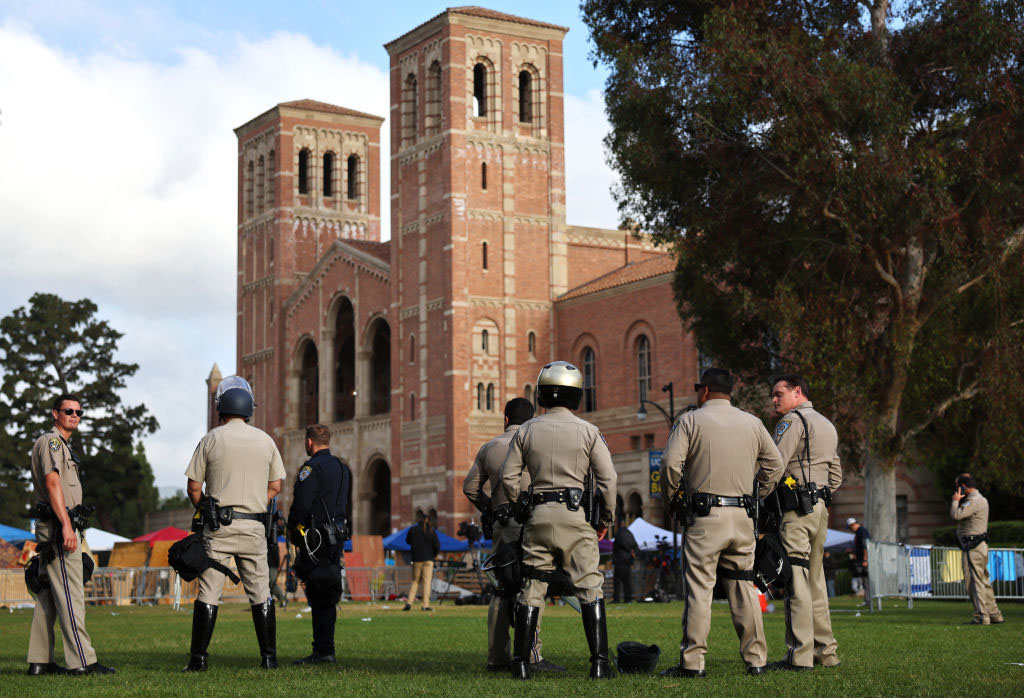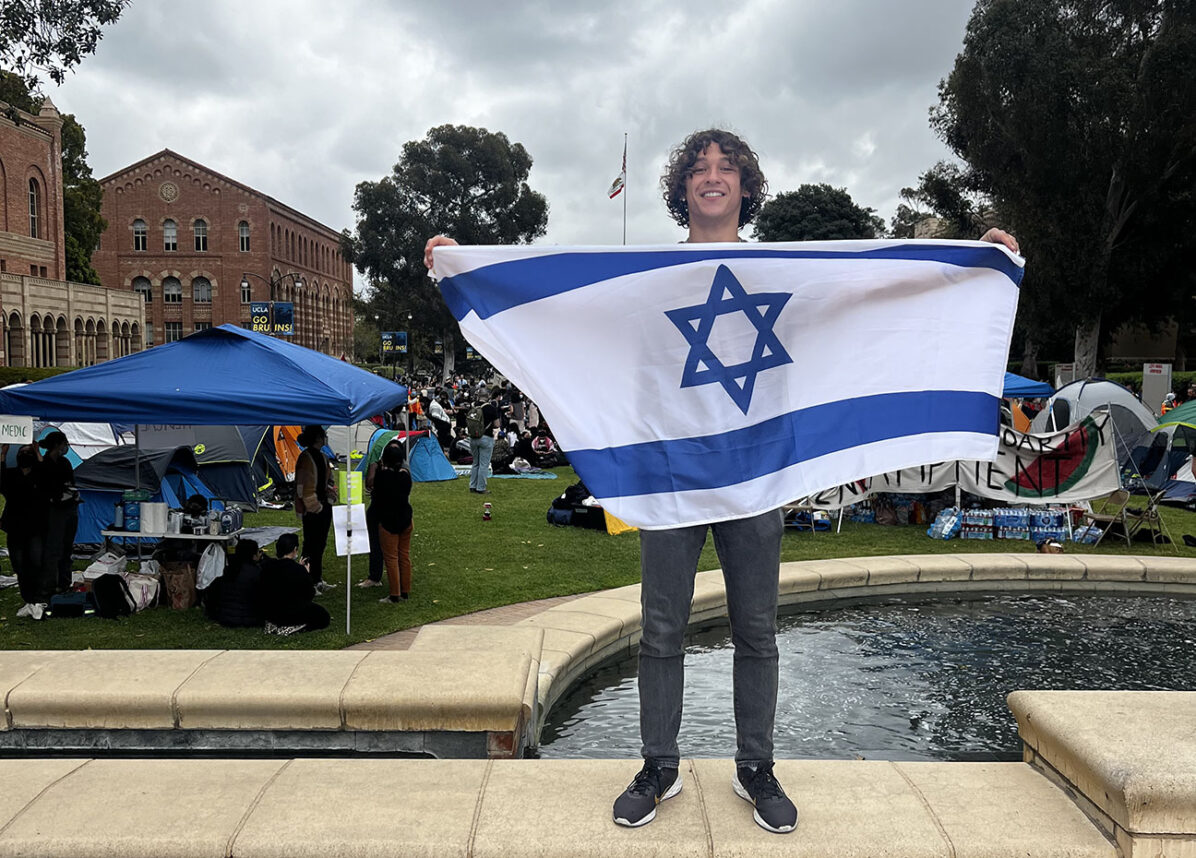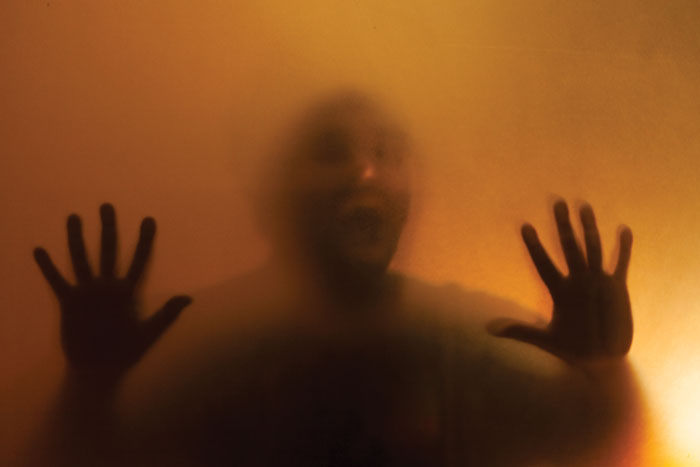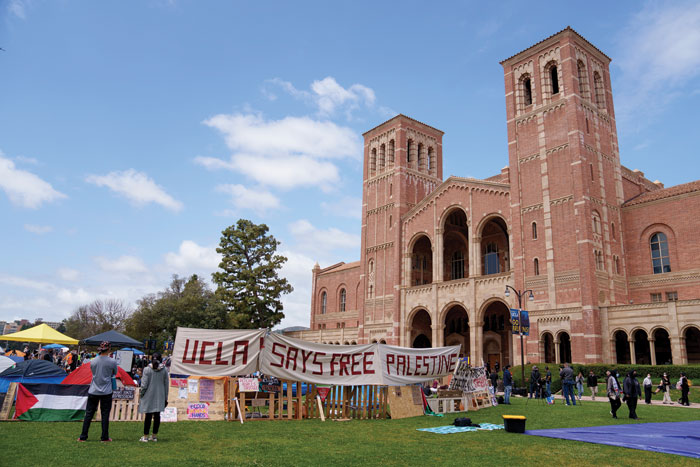The title of the current exhibition at the Skirball Cultural Center, “Various Illuminations (of a Crazy World),” says it all. Among the 100 works on display by artist Maira Kalman, it is her penchant for the whimsical that stands out, such as in the canvas titled “Annual Misery Day Parade,” prompted by watching a parade, thinking that everyone’s cheerful demeanor seemed phony and pondering a different kind of parade in which everyone expressed their real feelings. Those musings gave birth to a work containing marchers who carry banners with the slogans “Paralyzed with Panic Brigade,” “Existentialists Club” and “What’s the Point.”
“I look at the absurd,” Kalman said. “I try to make sense out of nonsense, and nonsense out of sense, and I really do have a keen awareness of how completely absurd it can be or can seem, and how do we make our way in there; of course, with humor and optimism, and some kind of delight in observation.”
Kalman, who has no formal training in art, takes her inspiration from anything that strikes her fancy in her travels or on her constant walks around New York, as she encounters various people, dogs, buildings and cars, all moving in their own way and living their own lives. She is also motivated by reading obituaries.
“I wake up very early, and I have a cup of coffee, and I look at the obits, because they’re usually very well written. They’re biographies of people who’ve done great and magnificent things, or small things like invent the Cheez Doodle, the snack treat. I’m interested in the trajectory of people’s lives. It does say something about time and about the limited amount of time that we have.”
Kalman is well known for her numerous New Yorker magazine covers, the most famous being “New Yorkistan,” which she created with Rick Meyerowitz soon after the destruction of the Twin Towers. The work is essentially a map in which the city is divided into sections that are given names based on the phonetics of Afghanistan and reflecting the tribalism they felt is endemic to any community.
“We were driving on our way to the Bronx,” Kalman recalled, “and I said, ‘Bronxistan,’ and we just started coming up with all these different names, and we created a hand-drawn map of New York that’s broken up into the five boroughs. It’s broken up into New York tribes, from Botoxia and Bulimikhs on the Upper East Side to the Moolahs on Wall Street, the Fattushis and Khandibar in other areas; Taxistan, as well as the Khakis and the Kharkeez in Connecticut. So we were able to poke fun at our tribalism, and somehow that sparked this phenomenal response. The magazine sold out in two days, and it was the best-selling cover they’ve ever had.”
But the multifaceted Kalman, who is also a photographer, designer and author, is quite capable of straightforward, serious creations. In contrast to “New Yorkistan” is the painting “The Planes Attacked,” a stark, austere work on blue background, consisting of two tall buildings, rendered in rudimentary style, and two small planes, their noses pointed directly at the towers. This was an illustration in a children’s book that Kalman wrote titled “Fireboat: The Heroic Adventures of the John J. Harvey,” about a decommissioned fireboat in New York, owned by friends of hers, that was slated to be sold for scrap. After 9/11, all the water mains were buried or broken, so the boat was used to help pump water from the Hudson for four days and nights, to fight the fires.

Maira Kalman, “Dog Reads Book,” 1999, gouache on paper, courtesy of the artist and Julie Saul Gallery, New York.
“It’s talking to children about tragedy and about what happens, and about what the resurrection is from tragedy,” Kalman explained, “because you can’t avoid it in your life, and children understand that, that horrible things happen. It’s about how you’re told you can deal with it, and how you can help.”
Other writings by Kalman include four children’s books about Max, the poet dog: “Max Makes a Million,” depicting Max in New York; “Ooh-la-la (Max in Love),” the story of Max traveling to Paris and falling in love with a Dalmatian named Crêpe Suzette; “Max in Hollywood, Baby,” about the poet dog’s adventures in Tinseltown; and “Swami on Rye,” which finds Max in India seeking the meaning of life.
The artist also wrote and illustrated two blogs for The New York Times online. In the first one, The Principles of Uncertainty, she discussed her life, her meanderings, the people she met, the books she was reading, the music she was hearing and her travels. The next year she wrote And the Pursuit of Happiness, which started with the inauguration of Obama and continued with Kalman traveling around the country and exploring various aspects of American democracy and history. The collected entries from each blog have now been published in book form.
Born in Tel Aviv, Kalman immigrated to New York with her parents when she was 4 years old. Her mother’s family had left Russia for Palestine in 1932; her father arrived in 1939. His family remained behind, and they were all killed in the Holocaust.
Kalman firmly believes that her work is informed by her Jewish background. “My parents’ history, their roots, their travels, their escaping from Russia, coming to Palestine, being in Israel, the identity of being Jewish, coming to America, of course, coming to New York, which is a wonderful place, but still feeling like an outsider, maintaining an Israeli identity, all those things were very much a part of my upbringing. The older I get, the more I realize how intense that is. I’m a human being, but I’m also a product of the cultural and religious history of my family.”
As for what she would like visitors to glean from this survey of her art, “I would like people to take away from my work the sense that things are very fragile, and life is full of problematic moments. At the same time, it is glorious, and beautiful, and funny, and amazing, and, if you incorporate both those perspectives in your world view, you’ll have a reasonable way of dealing with the world.”
“Maira Kalman: Various Illuminations (of a Crazy World)” runs through February 13, 2011 at the Skirball Cultural Center, 2701Sepulveda Blvd., Los Angeles. For more information visit skirball.org or call (310) 440-4500.






















 More news and opinions than at a Shabbat dinner, right in your inbox.
More news and opinions than at a Shabbat dinner, right in your inbox.